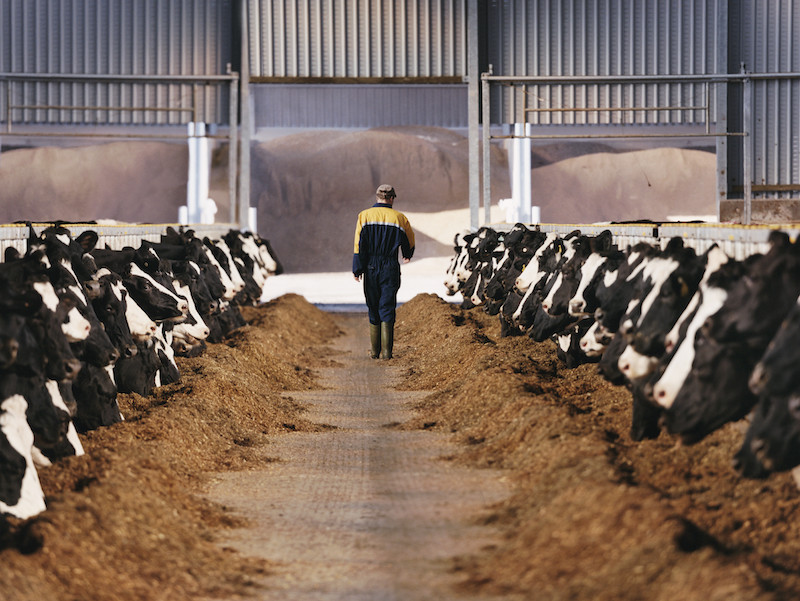
Experts argue that gaps in federal food safety rules require state governments to step up.
Despite all the talk about the Trump Administration’s deregulatory agenda, the U.S. agricultural industry earlier this year found itself subjected to new restrictions that could affect how your next hamburger is made.
The new rules limit antibiotic use in animal feed and could have potentially major public health implications. But it was not the U.S. Food and Drug Administration (FDA)—the federal agency tasked with monitoring food safety and animal drugs—that enacted the measure. Rather, it was the state of California.
But for an industry as sprawling and complex—and vital—as the nation’s agricultural sector, should states be the principal actors ensuring consumer safety?
In a recent paper, two scholars argue that they should. University of Vermont Law School’s Laurie Beyranevand and University of Indiana Robert H. McKinney School of Law’s Diana Winters say that more states should take initiative like California to enact food safety regulations of their own, rather than depend on federal regulators to lead the way. The balance between federal and state decision-making—what they call “foodralism”—needs to tilt more toward state governments, they argue. States need to fill the gaps in the current patchwork of U.S. food regulations and serve as laboratories for developing new rules and standards.
Federal food regulation in the United States can be found in a collection of 30 laws, implemented by as many as 15 federal agencies. Generally speaking, the U.S. Department of Agriculture (USDA) and FDA are responsible for the core consumer protections in this complex web of regulations, largely leaving states and local governments to administer federal rules by conducting inspections and enforcing standards. Local food policies such as the controversial soda taxes in Philadelphia, Berkeley, and other major cities are the exception.
Rather than simply relying on states to implement federally mandated standards, though, Beyranevand and Winters argue that states should “have the authority to more actively craft and execute food policy regulation to reflect local difference.” They say that in some cases states should even “attempt to drive national policy.”
Given states’ historic authority over matters of public health and welfare—along with the federal government’s failure at times to set needed standards—the threats to national uniformity are outweighed by the potential improvements to overall public well-being, Beyranevand and Winters say.
The notion of states assuming more responsibility in an area overseen by federal agencies could raise concerns about state law clashing with federal law. But Beyranevand and Winters write that the core federal food safety laws—such as the Food, Drug, and Cosmetic Act (FDCA), which grants regulatory authority to FDA—have very few provisions that would make federal law preempt state law where the two conflict. Outside of national standards for food labeling, Beyranevand and Winters observe, federal law affords states a lot of room to innovate.
Take California’s SB-27, the recent state law restricting use of antibiotics in animal feed, for example.
According to Beyranevand and Winters, the U.S. government has traditionally overseen animal drugs, but it has faced criticism that its regulations do not adequately limit the use of antibiotics, despite studies showing a link between their use in animal feed and the spread of antibiotic-resistant “superbugs” in humans.
Although antibiotics prevent the spread of disease in the food supply, their use has quickly expanded over the last 60 years, primarily because they help produce larger—and more profitable—animals.
Although FDA first considered withdrawing approval for some of these antibiotics as far back as the 1970s, the agency never took steps beyond issuing a notice for hearings on the issue.
Concerns about FDA inaction escalated to the point that an environmental group, the Natural Resources Defense Council, sued the agency in 2011, claiming that FDA unlawfully “withheld agency action” in violation of the FDCA and Administrative Procedure Act. After losing at the district court level, FDA won the case on appeal. Ruling that FDA did not neglect its regulatory duties, the Second Circuit Court of Appeals held that the FDCA only required that the agency ban antibiotics after holding a formal hearing and officially finding them unsafe—which it had not yet done.
FDA currently only requires that livestock producers voluntarily limit their use of antibiotics.
The new California law, however, fills many of the regulatory gaps raised in the 2011 lawsuit, Beyranevand and Winters say. Rather than depend on industry to control their use voluntarily, SB-27 bans the use of all antibiotics for non-disease prevention purposes and requires licensed veterinarians to prescribe antibiotic use otherwise.
Some observers predict that the state law will face legal challenges for conflicting with the FDA’s voluntary program, but so far no suits have been filed. The lack of any legal challenges to date suggests California’s model could work elsewhere, but Beyranevand and Winters note that the widespread uncertainty surrounding preemption discourages states from taking similarly innovative measures.
Ultimately, Beyranevand and Winters do not advocate that states unseat federal regulators as the primary monitors of the U.S. food supply. Instead, they argue that state and federal authorities should share responsibilities in a more blended and integrated system of “foodralism.” If that approach disrupts national uniformity, they argue, such consequences would be preferable to regulatory inaction.



